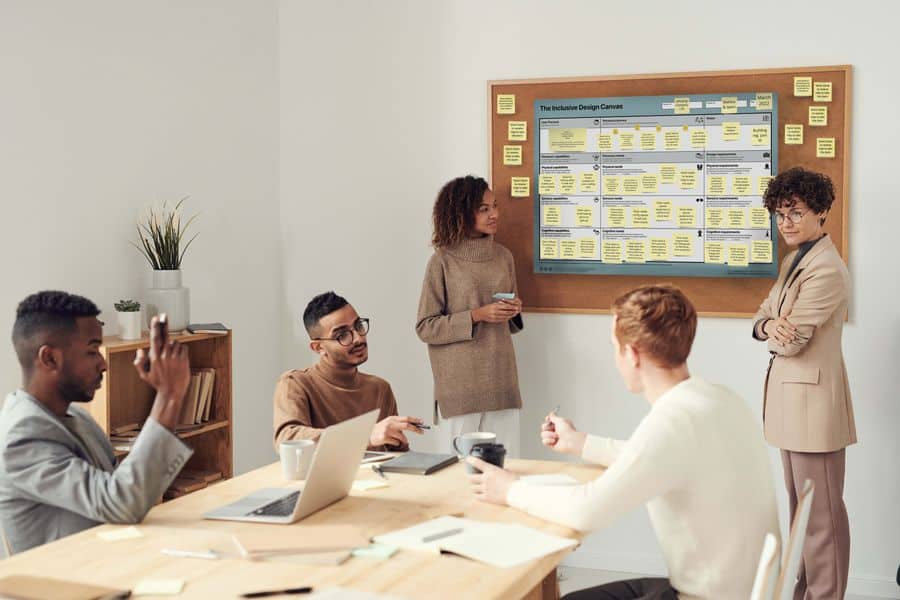EXCLUSIVE: Why inclusion, diversity, equity and accessibility matters for the built environment

Research suggests that while accessibility in buildings has overall been embraced by architectural design professionals the adoption of inclusive design is limited and far more work is needed. Inclusive design specialist, Matteo Zallio, a Senior Research Fellow at the Department of Engineering, University of Cambridge, discusses some of the free tools that have been developed to help create more accessible spaces…
By Matteo Zallio
When we design an object, a piece of furniture, a living space, a technology, an experience, we have to ensure that the design process allows to create solutions that meet people’s needs and aspirations.
Designing buildings that are sustainable whilst supporting the comfort and well-being of occupants has been a prominent factor in recent years. However, more work to develop safer and more accessible buildings needs to be done.
Research reported that Inclusive Design is generally misunderstood by architectural design professionals1.

This represents one of the underlying factors that characterizes the design of buildings that do not fully meet the needs and expectations of a diverse audience. Therefore, how can we design environments that guarantee inclusion, diversity, equity, and accessibility for all?
Mixed-method approach
Research directed by Dr Matteo Zallio with Professor John Clarkson from the University of Cambridge, in collaboration with the International WELL Building Institute (IWBI), funded by the European Union’s Horizon 2020 research and innovation programme under the Marie Skłodowska-Curie grant agreement N° 846284, aimed to tackle these imperative challenges by using a mixed-method approach grounded in ethnographic research.
A recent study2 found that accessibility is overall recognized and embraced in architectural design practice, however, the adoption of Inclusive Design is limited so far. Another challenging factor that was discovered brings the attention to the limited level of education and awareness that designers, architects, and clients have regarding Inclusive Design.
These challenges were further validated with a large-scale survey in which around one out of 10 survey respondents reported that clients and building owners are well informed about the benefits of designing inclusively3.
As a result of this biased perception the scarcity of client’s awareness was understood as the dominant driver of the insufficiency of clients’ requests and limited design of inclusive, accessible, equitable buildings.
The emergent need from companies and business leaders to understand more about how the workplace can offer a better and more inclusive experience to all employees, recently initiated various endeavours to establish new metrics for measuring DEI and procedures to design more inclusive spaces.
As companies, building regulators and the building industry are increasingly paying more attention to fulfilling both the basic and higher needs of building occupants, including comfort, safety, inclusion and personal satisfaction and the opportunity to offer new insights to those who have the responsibility for securing built environments suitable for all is now gaining greater traction.
The IDEA Toolkit
To find a possible solution to tackle these challenges and help increase knowledge of Inclusive Design the research team, with the support of several expert stakeholders, developed the IDEA Toolkit, a set of tools to advance Inclusive Design in the AEC (Architecture, Engineering, Construction) sector and across different organizations.
The IDEA Toolkit is composed of the IDEA Audit which helps building industry professionals and business leaders to collect feedback from building occupants on inclusion, diversity, equity, and accessibility with a novel, scientific approach.
On the other hand, the Inclusive Design Canvas supports teams in developing community engagement exercises and co-design processes by considering the variety of human capabilities and needs to redesign spaces and teams with a more inclusive approach.
With the IDEA Toolkit researchers, building owners, design teams, developers, facility managers, tenants and organizational leaders can achieve a baseline of understanding of what people feel in regard to inclusion, diversity, equity and accessibility, clearly identify pockets of inconsistency and use data to decide how to address challenges with bespoke action plans to improve the built environment or develop HR policies that effect a positive behavior change and promote a culture of well-being.
Early-stage validation results proved that these tools represent an impactful advancement in the field of Inclusive Design for designing environments that are inclusive and guarantee diversity, equity, and accessibility for all4.
The IDEA Toolkit seeks to democratize the process of understanding the value of Inclusive Design by increasing awareness and education about inclusion, diversity, equity and accessibility across all people and geographies. To this end, the IDEA Toolkit not only offers the opportunity to discover the possibilities of inclusion but has the potential to become a form of social sustainability for future generations.
Guaranteeing inclusive environments for all is a fundamental step towards reaching the targets set by United Nations with the Sustainable Development Goals and enable communities to thrive.
References
1. A. Heylighen, V. Van der Linden, I. Van Steenwinkel, Ten questions concerning inclusive design of the built environment, Build. Environ. 114 (2017) 507–517
2. Zallio, M. and Clarkson, P.J., Inclusion, diversity, equity and accessibility in the built environment: A study of architectural design practice, Build. Environ. 114 (2021) Vol. 206 No. 108352
3. Zallio, M., & Clarkson, P. (2022). A validation study on the challenges that architectural design practitioners face when designing inclusively.
4. Zallio M., Clarkson P.J. (2022). The inclusion, diversity, equity and accessibility audit. A post-occupancy evaluation method to help design the buildings of tomorrow. Building and Environment, 2022, 109058, ISSN 0360-1323


